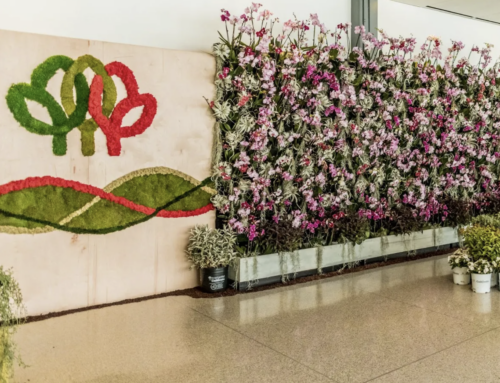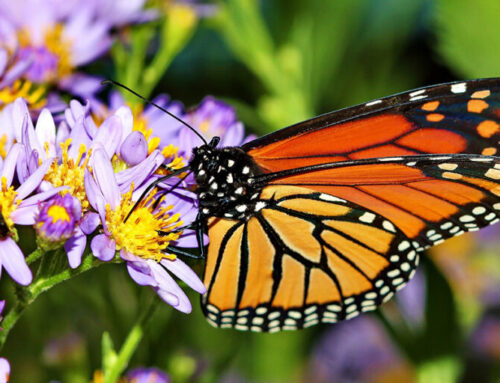This is the third posting regarding Impatiens – and we have probably saved the best for last.
Why so much attention on Impatiens?
For decades they have been a flowering favorite from Ontario to Louisiana and the East Coast through the Midwest, and also one of the best-selling flowering annuals in the US and Canada. Easy to grow, inexpensive and, once the blooming begins, the flowers are nearly unstoppable from spring until frost. For many years the options for bringing color to shade areas were quite limited. Marigold, Petunia, Begonia, Vinca, Alyssum, Geranium and Zinnia dominated the garden center display benches and all needed sun. The go-to plant for shade was Impatiens.

The reliability of Impatiens has been on a steady upswing. Due to disease infestations and competition, the Impatiens market faltered then resurrected. Discussed in earlier postings was the break-through varieties of the traditional Impatiens: Beacon and Imara XDR resistant to the devastating Downy Mildew fungus. Good news indeed, but another limiting factor still lingered for the Impatiens: sun.
The New Guinea Impatiens (covered in the most recent posting) entering the market back in the ‘70s were a welcoming sign. Both the flowers and the plants are larger and denser overall. New Guineas have more tolerance to the sun and are resistant to the disease that plagues traditional Impatiens. The true New Guinea Impatiens (excluding hybrids) tolerates, yet are still not made for the sun. My concern remained; I wasn’t comfortable planting any Impatiens in the direct sun any more than I was willing to expose my fair Irish complexion to be cooked under El Sol.

Photo: Costa Farms

Forget Made in the Shade – these Impatiens are
In 2006 Sakata Seed was the first to develop and introduce hybrid Impatiens for sun, befittingly known as SunPatiens. Though often grouped with New Guinea Impatiens (Impatiens hawkeri), Sakata clarifies they are not, but better classified as Impatiens x hybrida hort. I will simplify and refer to SunPatiens as a selective hybrid of Impatiens with undisclosed, “Classified” heritage.
There are a number of desirable traits that make SunPatiens a winner. A characteristic that distinguishes them from New Guineas: when night temperatures exceed 75 F, SunPatiens retain their flowers where as New Guineas can struggle and stop flowering for a time. Another desirable trait: if SunPatiens succumb to wilt from lack of water, typically they bounce back and surprisingly still hold their flower buds. New Guinea types drop their buds and take longer to recover.
As for appearance, SunPatiens resemble New Guinea Impatiens more than the traditional garden Impatiens (Impatiens walleriana).
Both the flowers and the overall plant size can be larger and more robust than other bed Impatiens. I had no idea SunPatiens have three different forms or growth habits – that’s a bonus:
- The Compact SunPatiens – though compact, they can reach 1.5–2.0 feet height with equal spread
- The Spreading SunPatiens – a mounding growth habit that is both 2.0-2.5 feet wide and high
- The Vigorous Series of SunPatiens – take a more upright, vase-shaped form at 2.5-3.0 feet high
A valid concern is how well these Impatiens would handle hot, humid conditions in the deep south. Credible answers can be found in Louisiana at the Hammond Research Station, LSU’s AgCenter trial gardens. The Compact SunPatiens Series was a hit, performing so well they were named to the elite Louisiana Super Plant Selection in 2017. The program is an educational and marketing campaign that showcases beautiful but tough plants thriving in Louisiana. This is no easy task.
Gardens face a barrage of insects: White Flies, Mites, Scale and Stinging Caterpillars to name a few. There’s also the disturbance of Coral snakes, Cottonmouths, Copperheads, and Canebrake Rattlesnakes, etc. (Louisiana evidently has a preference for snakes beginning with “C”). As with New Guineas, SunPatiens are also resistant to the Downy Mildew fungus that attacks traditional Impatiens (Impatiens walleriana). As with all Impatiens, it is advised to avoid wet soil with SunPatiens as root rot moves in fast. Despite the challenges, Compact SunPatiens excel and thrive in all gardens and notably in southern gardens, patio pots, baskets, and window boxes.
The array of colors available with SunPatiens includes various shades of pink, purple, rose, red, orange and white.
Before we get too far from Louisiana, what about the festive colors of purple, green and gold needed for Mardi Gras? SunPatiens got that covered with green foliage, purple blooms and well until gold Impatiens are invented, best substitute Marigolds in sun and Gold leaf Coleus in shade.
Speaking of shade, SunPatiens will work in shade as well. Be advised that the deeper the shade (lower light levels) as with most flowering plants, the number of flowers will diminish. SunPatiens varieties that have darker flower colors (red or purple) often perform better with some shade from intense mid-day sun.
Other sun tolerant Impatiens to discuss in future postings: Sun Harmony and Bounce.
-Rob McCartney, Horticulturist
Please feel free to contact me with any questions or for more info at:
Connect with us on social media!




